Art & Exhibitions
Why It Took Nearly Three Years to Curate the (Short) Artist List for the 2018 Carnegie International
The world's second-oldest international contemporary art survey is back for its 57th edition.
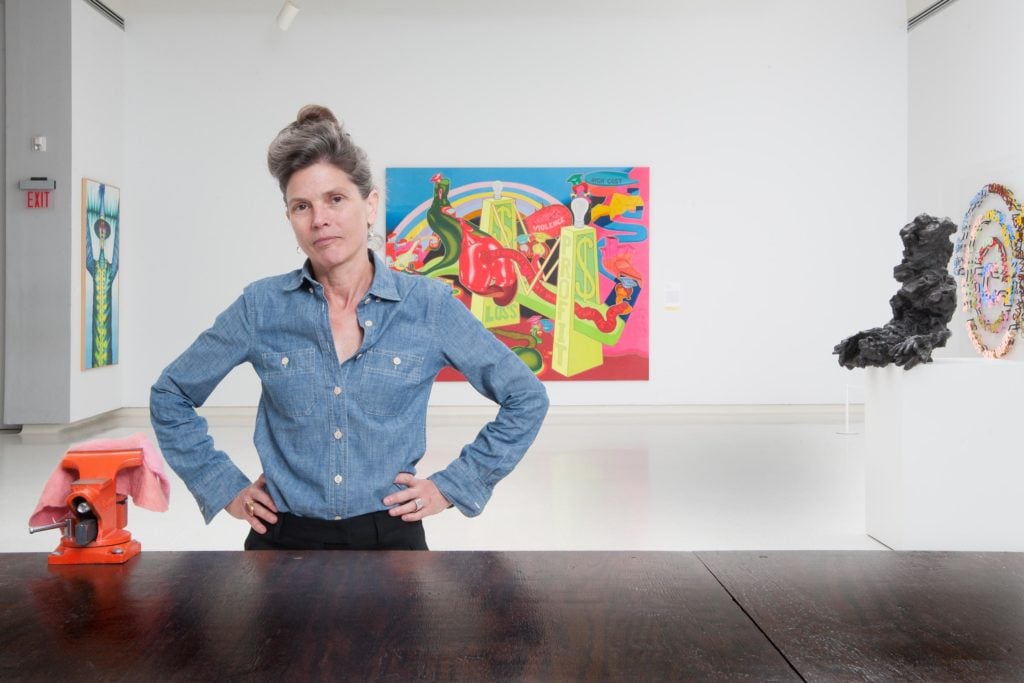
The world's second-oldest international contemporary art survey is back for its 57th edition.

Sarah Cascone

Pittsburgh’s Carnegie Museum of Art has named the 32 artists and collectives that are set to take part in the 57th Carnegie International, opening October 13, 2018.
The short length of the tightly curated list “was intentional,” curator Ingrid Schaffner told artnet News. “I wanted more time and space for each participant.”
Putting together the exhibition has been a long, involved process, according to the curator. “I got the call to do the International in January 2015,” said Schaffner, who moved to Pittsburgh in June of that year to begin work. “All total it will be three years in the making.”
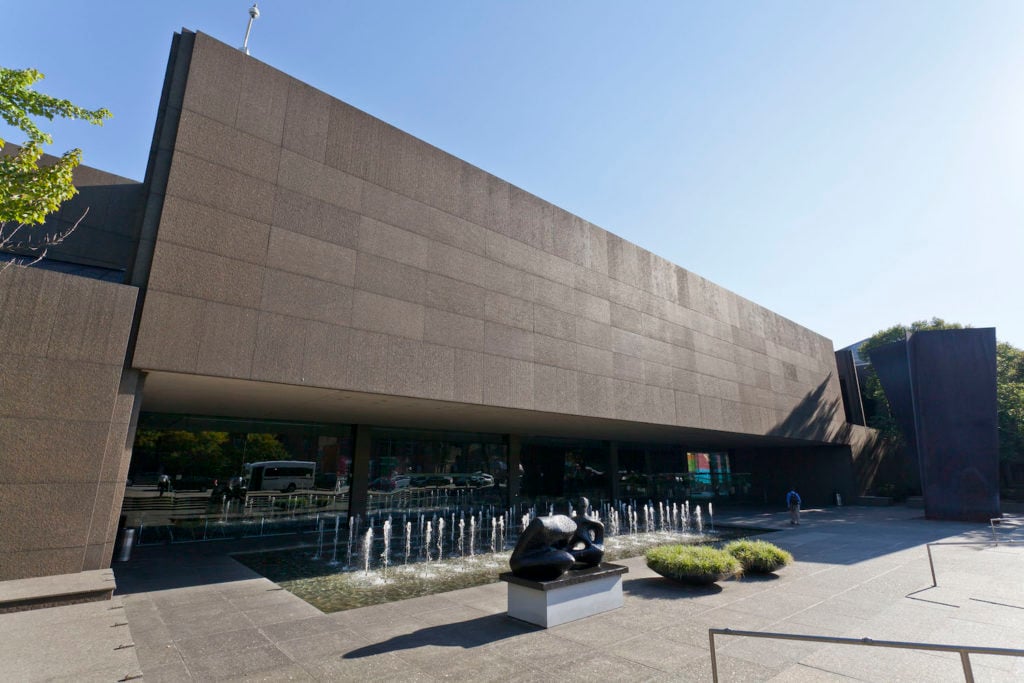
The Carnegie Museum of Art, Pittsburgh. Photo by Tom Little.
“I spent the year of 2016 dedicated to travel,” she added, noting that she put in as much time spent viewing major exhibitions and thinking about curatorial practice as she did visiting artists’ studios. “I took five big trips to parts of the world I had never visited before.”
Founded in 1896, the Carnegie is the world’s second oldest international contemporary art exhibition, and the oldest such survey in North America—it’s just one year younger than the Venice Biennale. It was founded by billionaire 19th-century steel baron and philanthropist Andrew Carnegie.
Now held every three to five years, the exhibition stands out among the innumerable biennials and triennials that have proliferated in recent decades, in part, because of the time it takes to bring the show together. “I think a biennial is happening at a quicker pace. It’s more of a snap snot by its nature,” Schaffner said. “The Carnegie International has to be more developed.”
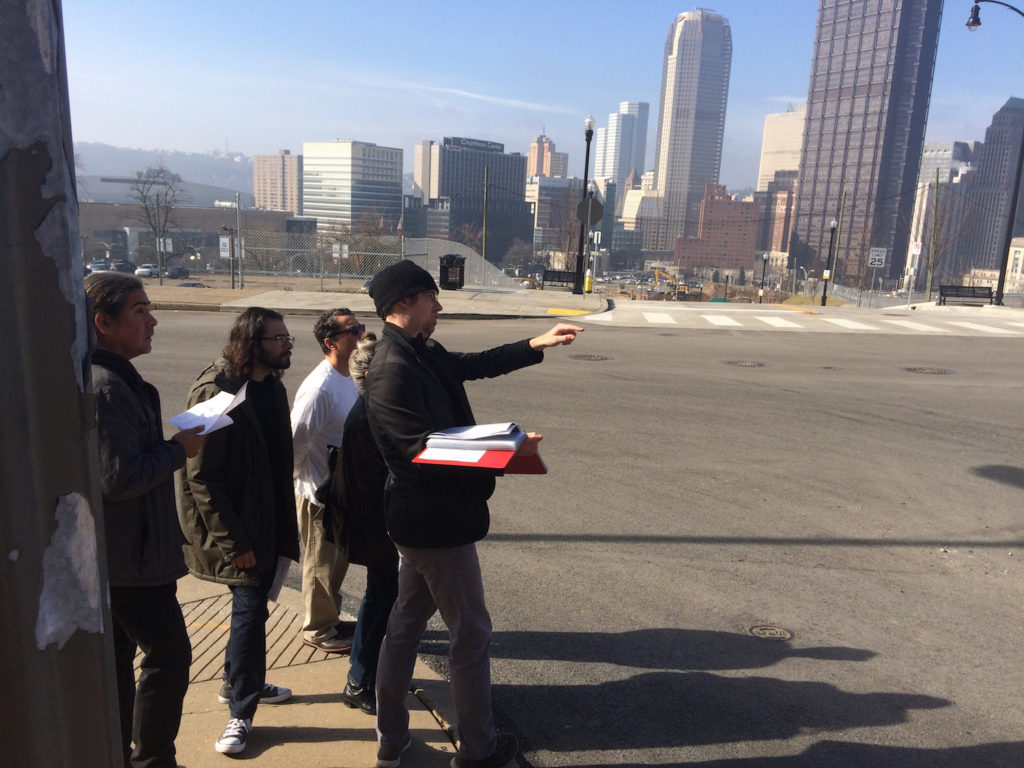
Postcommodity on a tour of the Hill District with ethnomusicologist Colter Harper (2017). Left to right: Raven Chacon, Cristóbal Martínez, and Kade Twist of Postcommodity; Ingrid Schaffner, curator, Carnegie International; Colter Harper. Photo by Liz Park.
The International also has something of an unusual venue. “The Carnegie is an art museum and a natural history museum, in an immense building that also contains a hall of music and a library—it’s a museum of museums,” Schaffner said.
In order to make sure the artists each knew what they were signing up for, each participant was invited to visit the city before officially signing on to the event. “After we explored Pittsburgh with each artist for a few days, it was time to pop the question, ‘are you in?’ Schaffner recalled. “All of the people we went on first dates with said yes!”
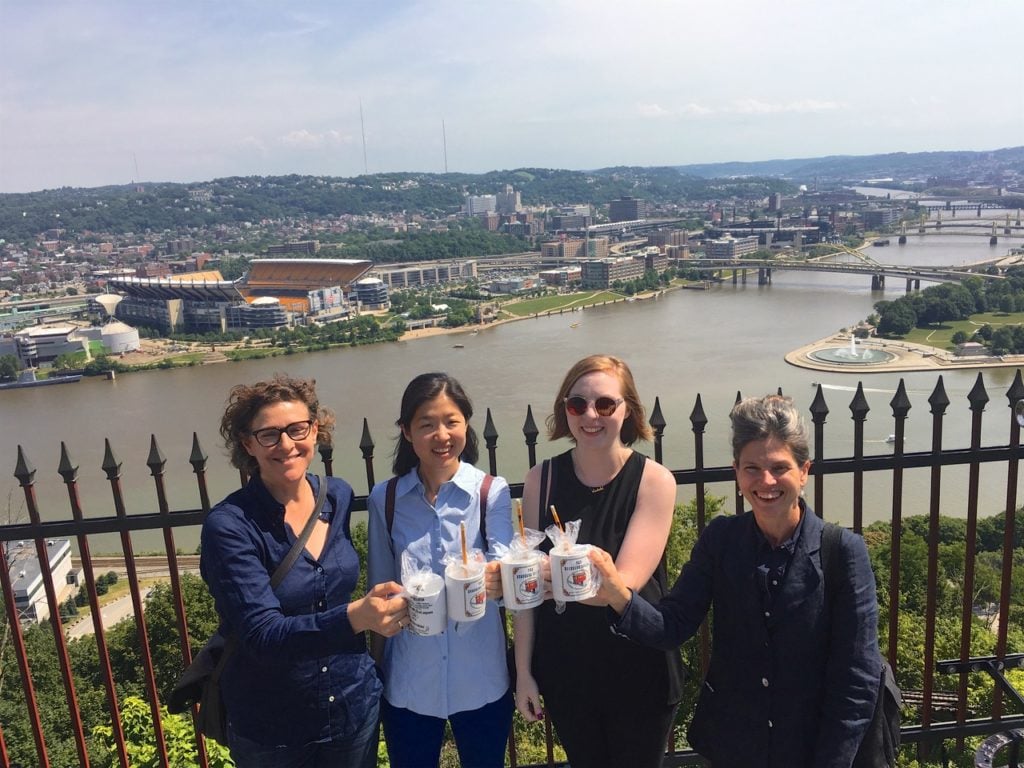
Zoe Leonard and the Carnegie International curatorial team on Mt. Washington after a ride on the Duquesne Incline (2017). Left to right: Zoe Leonard; Liz Park, associate curator; Ashley McNelis, curatorial assistant; Ingrid Schaffner, curator. Photo by Chris Taylor.
Most of the works will be new, many made specifically for the exhibition (although not necessarily about Pittsburgh). Lenka Clayton and Jon Rubin, for instance, drew on the International’s storied history for inspiration, sifting through museum records to find the best titles from the over 10,0000 submissions to the exhibition rejected between 1896 and 1931.
“The archives have these amazing note cards,” Schaffner said. “The titles are incredible, like Cactus Girl and Boxing Clowns. It was an era art when nothing was untitled, and a lot of them are quite specific and evocative.” By delving into this forgotten institutional history, Clayton and Rubin will give these rejected artworks new life and new value.

Kerry James Marshall, from the “Rythm Mastr” series (1999–). Courtesy of the artist.
Schaffner is also drawing on more recent memory, by revisiting Kerry James Marshall’s “Rythm Mastr” comic series, featuring black superheroes. The comic strip debuted in the Pittsburgh Post Gazette and was accompanied by an installation at the International in 1999, where the drawings were used as wallpaper in a gallery.
“The museum recently acquired a major work of Kerry’s from 2016,” Schaffner said. “I thought this was a moment to return to Kerry’s first touchstone at the Carnegie where he launched this major body of work.”
“He said, ‘funny you ask this because I am about to redraw the first part of the series to bring it in line with the language that I’ve developed for the rest of the comics,'” Schaffner added.
In a more subtle nod to International’s past, Schaffner has placed the work of Yuji Agematsu, who made one new sculpture every day in 2017, in the same space where On Kawara’s Carnegie Prize-winning “Date Paintings” were displayed in 1991. Schaffner doesn’t expect people to make the connection between the two bodies of work, but she’s constructed the exhibition on “this idea of building on something that’s accruing and accumulating”—the notion that each International is inherently connected to those that proceeded it.
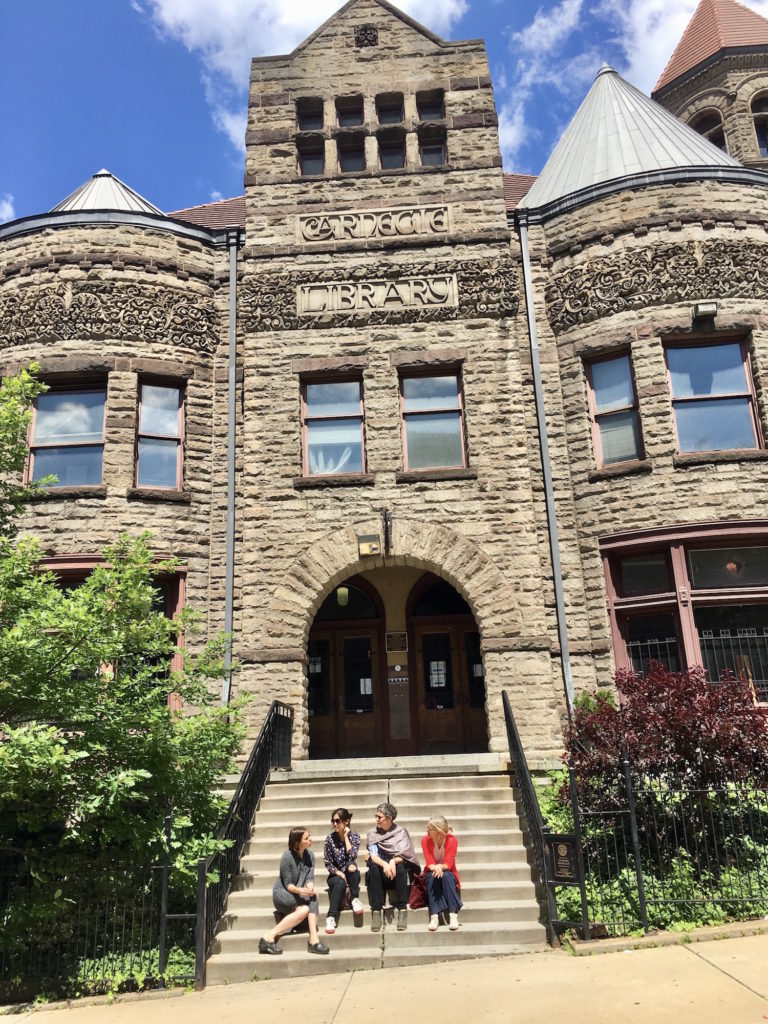
Sarah Crowner and Ulrike Müller visit the Braddock Carnegie Library. 2017. Left to right: Dana Bishop-Root of Transformazium/Braddock Carnegie Library: Liz Park, associate curator, Carnegie International; Ulrike Müller; Sarah Crowner. Photo by Ingrid Schaffner.
Other projects include a collaboration between filmmaker IM Heung-soon and novelist Han Kang, who Schaffner praised for her engrossing prose. “It makes sense that her work would want to come out of the page and into the visual space,” she said.
There’s also a second curator involved. For “Dig Where You Stand,” Koyo Kouoh is creating an exhibition within the exhibition that will explore histories of colonialism. “It’s using the Carnegie collection as material research, drawing both from the art museum’s collection and the natural history museum’s collection,” Schaffner explained. “Koyo creates places of discourse and learning and exchange.” The title is a play on the dual meaning of “dig”—both to excavate and to understand.
Although October may seem a long way off, Schaffner is already in the thick of things. “The website has been a place for publication and exchange for some time now, and the public programs began well over a year ago, with artists presenting their work to the community at drawing sessions,” she noted. “The International culminates in an exhibition, but it is already happening.”
Here is the complete artist list for the 57th Carnegie International exhibition:
Yuji Agematsu
El Anatsui
Art Labor with Joan Jonas
Huma Bhabha
Mel Bochner
Mimi Cherono Ng’ok
Lenka Clayton and Jon Rubin
Sarah Crowner
Alex Da Corte
Tacita Dean
Jeremy Deller
Kevin Jerome Everson
Leslie Hewitt
IM Heung-soon and Han Kang
Saba Innab
Karen Kilimnik
Zoe Leonard
Kerry James Marshall
Park McArthur
Josiah McElheny with John Corbett and Jim Dempsey
Ulrike Müller
Thaddeus Mosley
The Otolith Group
Postcommodity
Jessi Reaves
Abel Rodriguez
Rachel Rose
Beverly Semmes
Dayanita Singh
Lucy Skaer
Tavares Strachan
Lynette Yiadom-Boakye
and
“Dig Where You Stand,” by independent exhibition maker Koyo Kouoh
The 57th Carnegie International exhibition, organized by Ingrid Schaffner, will be on view October 13, 2018–March 25, 2019.